
15 minute read
Strength in Jewelry
Strength in Jewelry Native American students at ASU share their passion and pride for wearing traditional jewelry pieces off of the reservation as a sign of identity and strength.
Daangoiina Haven Sequoia Dance Desiree Yazzie
Advertisement

For ASU Cross Country and Track For Social and Cultural Pedagogy Wearing Navajo jewelry gives Civil runner Daangoiina Haven (Navajo), graduate student Sequoia Dance, each Engineering senior Desiree Yazzie a there is a lot of representation, exercise, beadwork jewelry she owns holds sense of belonging to her tribe and her wellness and traditional stories that go significant representation, meaning and family. Her pieces reminds her of her into detail about the different aspects of effort put into it as far as material, design, family who made the jewelry as well
Navajo jewelry. Some include the way the and colors. as the strength and reason behind the jewelry is stored, the purpose behind each “Our tribe is known for beadwork,” gifting. design and piece, and how it protects and Dance (Shoshone-Bannock/Assiniboine) “When I was little, my mom made identifies the wearer. said. “One thing that I have learned in a necklace for me when she worked “My mom and grandma taught me a lot making beadwork is (that) a lot of people at Navajo Arts and Crafts in Window about the significance of jewelry when I aim for perfection, but I have been Rock,” she said. “One day when she was was growing up,” Haven, an Exercise and taught from multiple people and tribes working, she saw one that was really Wellness major to always leave one bead intentionally expensive and she thought to herself, ‘Oh, “When you and junior, said. “I learned more about in the wrong spot or have the wrong color. We as humans can never be I can make this myself.’” Yazzie describes the necklace as being very simple and wear Native it in my Kinaaldá perfect and perfection is not something eye-catching with bits of turquoise jewelry... ceremony. They would tell me to “I try to wear that we should necessarily strive contrasting the darker shades of “Oh, I can it was protected.” that is what protects you” put all my jewelry in a basket and to always keep it in there to make sure beadwork of any kind on almost a for.” Whether it was gifted to her by a tribal member, family the materials. The necklace has become a part of who Yazzie is today. Wearing it in high school and now in make this myself.”
Since her Kinaaldá (a traditional Diné puberty ceremony), Haven has continued daily basis.” or if she bought it from a vendor, college has made the piece more special for her. Yazzie explains that wearing her this tradition of keeping her jewelry in her each piece of her’s has a story behind it. Native jewelry is important to her. basket for safe keeping, including baby When she graduated with her bachelor’s “All the jewelry that I have received in bracelets that was given to her when she from Washington State University, she my life is my family’s,” said Yazzie. “In a was younger. She hopes to pass them was gifted with jewelry and is a reminder way they are taking care of you.” down to her children so they can pass it of how much she has accomplished and down to theirs as a symbol of identity and motivates her to continue her education. protection. “I was the former Miss Shoshone “When you wear Native jewelry, Bannock and before that, (wearing specifically turquoise, that is what protects jewelry) was still important to me, but you and the Holy People will bless you it became a lot more important (in) because they know you are wearing recognizing that anywhere I go outside turquoise,” Haven said. “Every day you of our community, I am representing should wear a piece of jewelry, either my family, myself, (and) my community,” turquoise or silver. It is very important.” Dance said.
We Are
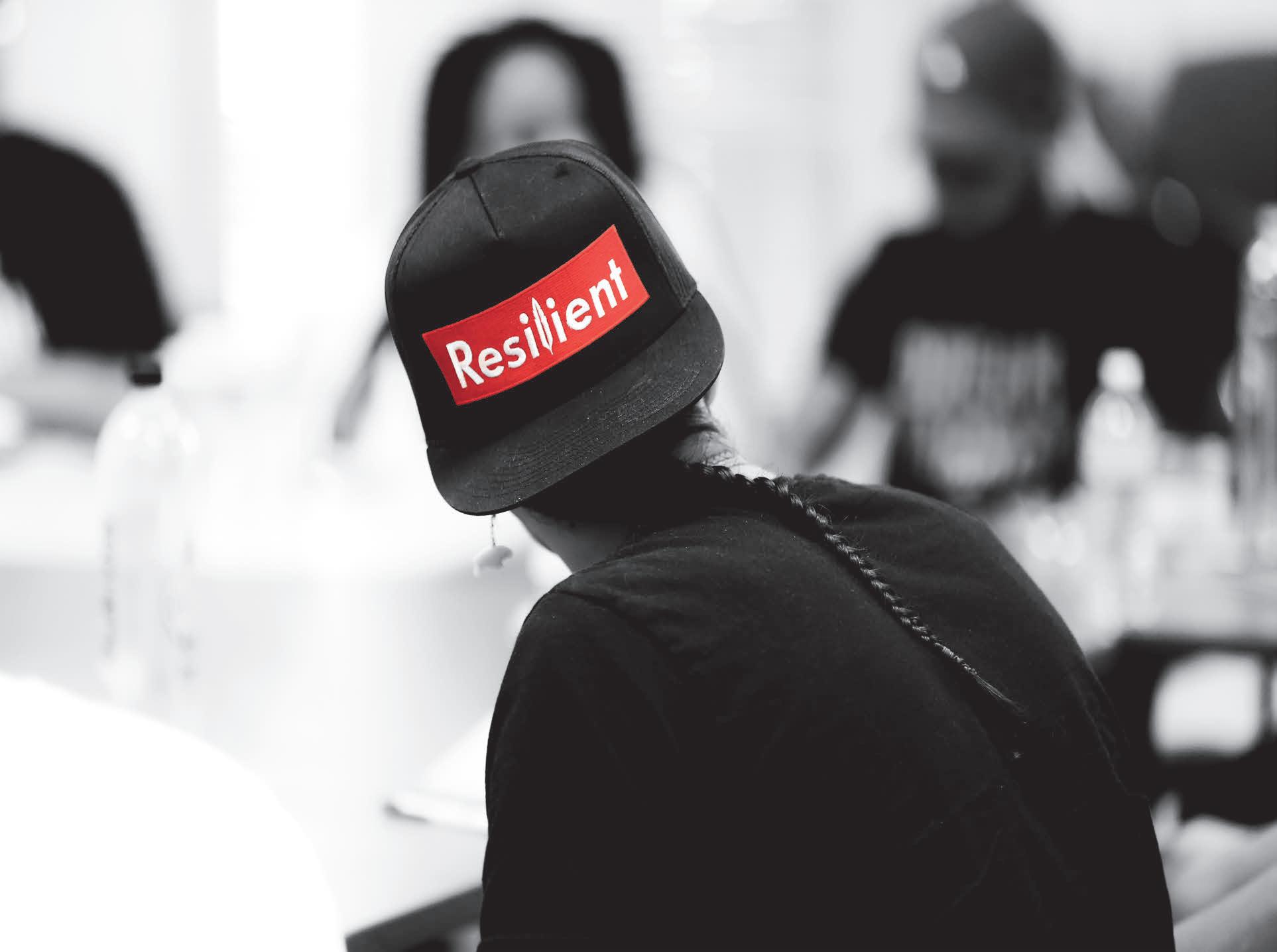
Dream Warriors at ASU
3,035 Native students. That is the figure that marked a record-high in the university’s Native student enrollment during the Fall 2018 semester. Correlated with this achievement was a visit in September from the Dream Warriors, a collective of artists who travel Indian Country to “empower others to embody, teach and live their heartwork.”
Frank Waln (Sicangu Lakota), Tall Paul (Anishinaabe), Mic Jordan (Ojibwe), Lyla June (Diné/Cheyenne), and Tanaya Winder (Southern Ute/Duckwater Shoshone/Pyramid Lake Paiute) address personal, historical, ancestral and intergenerational trauma through art and discussions.
Kickstarting their national “Heal It Tour” at ASU, their message to Sun Devils was simple yet mighty: resist through self-empowerment.
“Know who you are because these systems aren’t built for us. They’ll try to steal your light and tell you who you are,” Waln said. “Remain grounded and rooted in your community, culture, land and who you are. Go forward in that way and I think you’ll do good.”
Brought to ASU in a collaboration between Poetry Across the Nations, the Alliance of Indigenous Peoples, the Center for Indian Education and [archi]TEXTS, their visit consisted of live performances and intimate poetry and songwriting workshops for the ASU community.
“It feels like a blessing to do what we do,” Winder, the group’s founder, said. “We pick up a lot of people’s stories and pain. When you’re taking all of that in, that energy needs an outlet. Thinking about how all of our traumas…
and healing are connected, we wrote (the song ‘A History of Hearts Breaking’) as a gift to process all of that.”
The artists bring their own creative tools and personal experiences to the songwriting table, opening up conversations on hard-hitting topics such as drug use and language loss, and addressing these subjects by highlighting sobriety and language revitalization.
For multi-instrumentalist Lyla June, her song “All Nations Rise” is a song of healing for listeners.
“I wanted to write about getting our people back on their feet,” June said. “As Indigenous peoples, we’ve been beaten down for so long sometimes it’s hard to have hope and get up in the morning. (The song gives) them the courage to drive.”
In Tall Paul’s “Prayers in a Song” (written and submitted as his senior project while attending the University of Minnesota), he raps in both English and Ojibwe, marking it as a powerful song on identity and is used as a revitalization tool by educators across the country.
“(Growing) up on the city or on the rez, there’s a chance that you didn’t grow up with your language and culture due to colonization,” Tall Paul said. “I didn’t really know what it meant to be Native. When I got into college, I took (an Ojibwe) course and started learning about my language.”
Waln’s song “Wokiksuye” also touches on language in which he sings the Lakota phrases “Wokiksuye Mi Oyate/Wokiksuye Mi Tiwah” (translation: “Remembrance of my Nation, Remembrance of my family”).
“My great-grandparents were the last people in my family to speak Lakota, (which they) took to the grave because the boarding schools never taught anything to my mom and her siblings,” Waln said. “So I decided to start writing songs in Lakota to maybe heal those wounds that my grandmother took to her grave.”
For both Winder and Mic Jordan, songwriting is a type of diary.
“I’m really shy and awkward, but I love poetry and writing,” Winder said. “There’s not anybody that I share my thoughts with, but the page and the song, that’s where I feel like I can share. Each song is a prayer.”
Mic Jordan discovered the healing powers of music at a young age growing up on the Turtle Mountain Indian Reservation in North Dakota.
“Music for me has always been a diary that somebody found,” Mic Jordan said. “There’s something about music that just hits the soul at a time when you need it the most. I fell in love with hip hop because a lot of their stories were parallel with what we were going through on the rez: they were stories of struggle.”
In helping Indigenous youth heal today, the Dream Warriors were asked for their advice to introverts in college. Here is what they had to say.



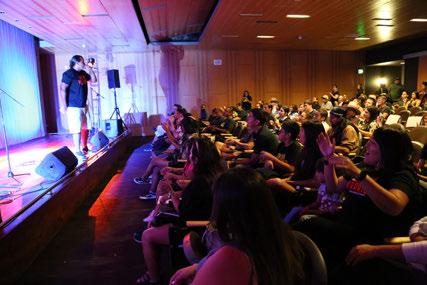
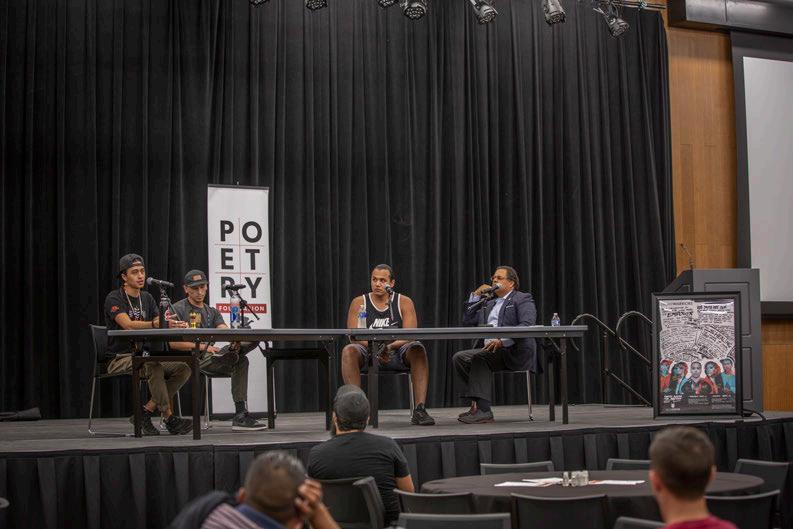
Tall Paul:
(University of Minnesota) I was probably one of the most quiet kids in my high school. What helped me succeed in college was immersing myself in the communities on campus that I was comfortable with, (which) was the Native student groups (and offices). I made sure to establish relationships with the Native counselors on campus. I got out of my shell in college because I made an effort to go out there, meet people and get help with my academics. I always tell people to get out of their comfort zones. As an incoming freshman who’s an introvert, I would say get comfortable first and slowly get out of those comfort zones.
Frank Waln:
(Columbia College Chicago, a Gates Millenium Scholar) If you are an introvert, it’s okay. Don’t ever believe that your voice or stories aren’t worth anything… because each and every one of us is a miracle. Less than one percent of our people survived. We are the special ones. I still struggle with being an introvert a lot, but now I know my voice and I try to chip in when I’m brave enough and when I think it matters.
Mic Jordan:
(Minnesota State University Moorhead) By you already being yourself, you’re decolonizing both inside and outside.


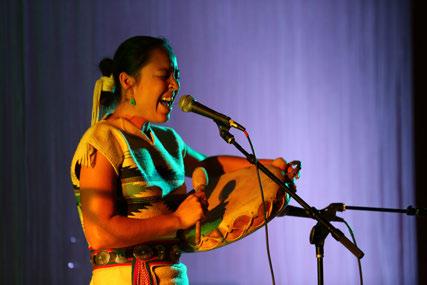

Lyla June:
(Stanford University) Maybe you’re introverted for a reason because this space wasn’t made for you. When I went to Stanford, I drank the Kool-aid of like, ‘Oh yeah, this is all normal. We write, read books, go to lectures and we get this grade,’ but our ancestors never did that. We didn’t grade each other, we didn’t have a written language --not because we couldn’t, we knew of other nations who had it-- but because it was so easy to lie that way and we believed in the oral organic transfer of information. I tell introverts: don’t try to fit in.
Facilitators Dr. Bryan McKinley Jones Brayboy, playwright Larissa FastHorse and ASU English professor/poet Natalie Diaz joined the panel “Reimagining Indigenous Identities and Relationships: Conversation with Dream Warriors” at the Student Pavilion on Sept. 6, 2018. (Photos by: Brian Skeet/ Turning Points Magazine.)
Tanaya Winder:
(Stanford University, University of New Mexico) I wished someone told me to find more mentors and friends to help you. (Being) so introverted, I really need people who help me in different ways. If I was struggling to identify a person who could help me, just be really open and vulnerable. Say, ‘Hey, I’m really shy, I need a study buddy-- can you work with me?’ I think that’s how I survived Stanford looking back, was finding my loud, fierce friends... who didn’t take no for an answer. It’s just recognizing your strengths. As everyone was saying: know who you are, be okay with who you are, and figure out how you can use who you are to help in different ways.
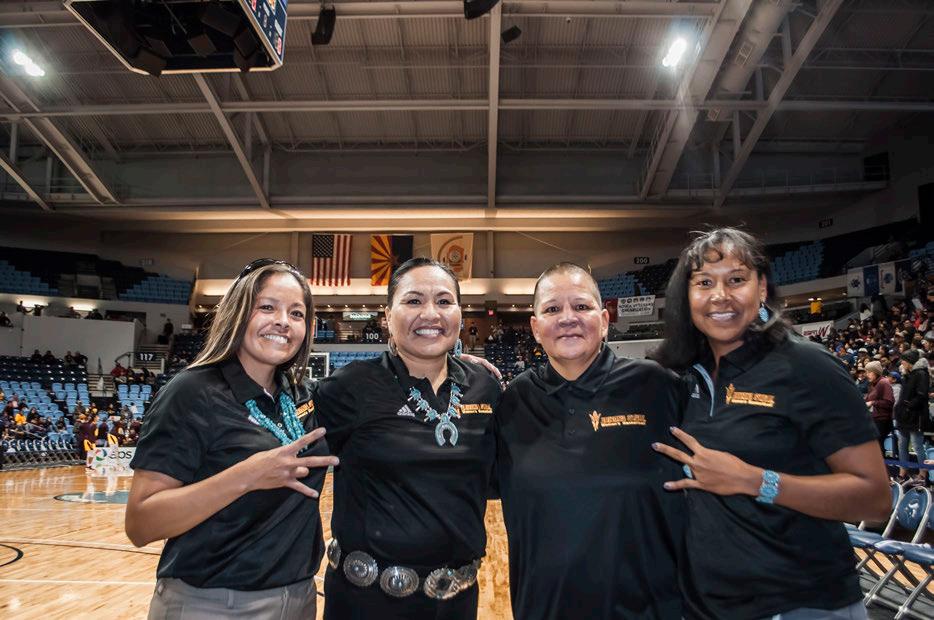
Showdown on the Rez
On a cold, windy Saturday evening in Fort communities and veterans. Defiance, Arizona, about 60 Native youth were “For them to bring the game that we love so much doing basketball drills and warm ups inside the Bee to the rez (and) to a national limelight is recognition, Hółdzil Fighting Scouts Events Center. The sounds being proud that we’re still here,” Dr. Tom said. “We of dribbling Spalding basketballs and squeaks from deal with genocide and literally, a lot of people think stampeding sneakers echoed throughout the nearly we don’t exist. Being on ESPN just lets people know empty 6,500-seated arena. that we are still here, we are still surviving and we’re
“I love basketball! I love basketball!” the youth strong.” yelled as the facilitators, Ryneldi Becenti and Dr. Per capita, Native Americans make up the largest Michelle Tom, stood smiling at the center of the court. ethnic representation in the military, said ASU head
Held one day before coach Charli Turner Thorne. the ASU-Baylor women’s basketball match (dubbed “For the Diné “There was over 40,000 Native American Vietnam soldiers, so we (put) the “Showdown on the Rez”) was a youth alumni, the event a huge emphasis on celebrating and honoring the troops, past and present,” basketball clinic where these former Sun Devil was also a win she said. Turnout on game day was huge. legends imparted for passing on Spectators nationwide tuned in to basketball wisdom-- and jokes-- to campers. their love for rez watch as the fourth-ranked Baylor Bears narrowly defeated No. 23 Arizona “Remember: when you’re doing any sport, your heels ball to the youth, State with a 65-59 win. Despite the loss for ASU, the event (brought in should not touch the floor,” four-time Hall of Famer exemplifying one partnership with the Office of American Indian Initiatives) was an overall win. Becenti said. “Always of the many ways An estimated 5,609 spectators filled on your tippy toes! Don’t stomp like you’re running to they serve their the arena that evening, making it “the largest crowd in the history of the Bee the carnival.” “Say mutton! Say ach’íí!” communities. ” Hółdzil Fighting Scouts Events Center,” according to ASU Women’s Basketball Dr. Tom said as the group Director of Operations Ryan Cohen. gathered for a photo at the end of the camp. For the Diné alumni, the event was also a win
Invited as guest coaches to the Showdown game for passing on their love for rez ball to the youth, were Diné former Sun Devil players Becenti (‘93-’94), exemplifying one of the many ways they serve their Dr. Tom (‘98-’99), Rainy Crisp (‘00-’03) and Kalene communities. Carl (‘97), each leaving remarkable imprints in ASU A “gym rat” who first started shooting hoops at age sports history. five, Becenti holds many life accomplishments under
Hailed as the first NCAA women’s basketball her belt. Paving the way as the first Native player game to be held on a reservation and nationally in the WNBA who played overseas in Sweden and televised on ESPN2 on Veterans Day, November Greece, she was also the first ASU player to have 11, the Showdown is a swish in recognizing Native her jersey retired and hung from the rafters in Wells

Forks up! From left to right: Kalene Carl ('97), Dr. Michelle Tom ('98-'99), Ryneldi Becenti ('93-'94) and Rainy Crisp ('00-'03). (Photo by: Taylor Notah/Turning Points Magazine.)
Fargo Arena. Currently residing in Shiprock, New Mexico, she travels to reservations hosting numerous basketball camps and workshops, instilling hope within those she teaches.
“I always tell people basketball was my ticket, basketball took me everywhere,” she said. “In college I was very shy, but basketball was my getaway. My dad always said, ‘Don’t be afraid to take steps further.’ Now I conduct basketball camps and I see the youth and their talent here. I keep telling them, ‘Practice hard and you can be out there, you can play at that level.’”
Dr. Tom is a first-generation college student who went on to achieve her bachelor’s and master’s degrees at ASU and then a medical degree at Florida’s NOVA Southeastern University, knowing she wanted to serve her community.
“Basketball was my first love, but (my lifelong dream) was coming back and working for Winslow Indian Health Care Center,” Dr. Tom said. “I just wanted to come home, help the community. (Medical school) took eight, nine years of my life… but basketball paid for my schooling. Now I’m a medical doctor in Winslow.”
Playing basketball since six or seven years old, Rainy Crisp comes from an educated family. Her mother was executive director at Navajo Preparatory School in Farmington, New Mexico, where Crisp now serves as Athletic Director for the girl’s basketball and volleyball teams.
“I always knew that I wanted to come back to the reservation and coach,” Crisp said. “(As a student), that homesick was always there. I missed home, I missed the atmosphere, I missed going to the flea market on Saturdays, and the food. At the same time, I wanted to do this for myself and make my family proud. When I graduated from ASU, I came back as a teacher at Navajo Prep for 12 years, then I went up to be an athletic director (which I’ve been) for two and a half years.”
Playing for the Lady Sun Devils in 1997, Kalene Carl, of Sawmill, Arizona, is a former civilian police officer and has currently served in the U.S. Air Force for a total of 14 years. Due to her military schedule, Turning Points was unable to get further insights from Carl.
Reflecting on these former players she once coached, Coach Charli sees the incredible imprints they leave behind not only at ASU, but the paths paved for all of Indian Country.
“They’ve utilized their education of basketball to become incredible leaders for their communities,” Coach Turner said. “Basketball is a vehicle for you to grow into a strong caring leader. It teaches you how to be tough, how to communicate authentically, have positive, healthy relationships, and dig deep and get things done no matter what.”
Center for Indian Education Arizona State University P.O. Box 871311 Tempe, AZ 85287-1311







